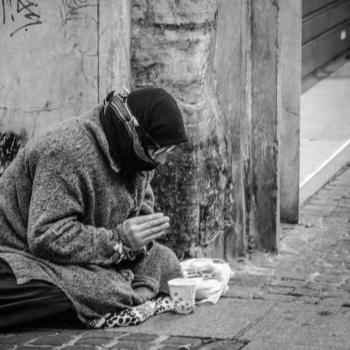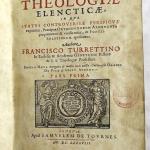But when Herod’s birthday came, the daughter of Herodias danced before them and pleased Herod, so much that he promised with an oath to give her whatever she asked. Having been prompted by her mother, she said, “Give me here on a platter the head of John the Baptist.” Although he was grieved, the king commanded it to be given because of his oaths, and because of his dinner guests. He sent and had John beheaded in the prison.
–Matthew 14:6-10
 The Church of Saint Sylvester in Capite (San Silvestro, in Italian), built in the eighth century by Pope Paul I and Pope Stephen III, sits atop the ruins of a temple to Apollo. It was constructed as a shrine for relics of the saints and martyrs buried in the Catacombs and is, in fact, named after its most famous relic: the head of John the Baptist.
The Church of Saint Sylvester in Capite (San Silvestro, in Italian), built in the eighth century by Pope Paul I and Pope Stephen III, sits atop the ruins of a temple to Apollo. It was constructed as a shrine for relics of the saints and martyrs buried in the Catacombs and is, in fact, named after its most famous relic: the head of John the Baptist.
* * * * *
We know from the scriptures that Elizabeth, older cousin of Mary, was about six months pregnant when Mary traveled from Nazareth to visit her, and to help her during the last months of pregnancy. So it is that the Church chooses this day, six months before the birth of Christ, to celebrate the birth of his cousin John.
 On this day, pilgrims stream through the Church of Saint Sylvester, bringing flowers and prayers for this saint who played at Mary’s knee, who fasted on locusts in the desert, who baptized Jesus in the Jordan, and whose head is there preserved, enshrined on red velvet and encased in plexiglass.
On this day, pilgrims stream through the Church of Saint Sylvester, bringing flowers and prayers for this saint who played at Mary’s knee, who fasted on locusts in the desert, who baptized Jesus in the Jordan, and whose head is there preserved, enshrined on red velvet and encased in plexiglass.
* * * * *
One of the things that has struck me about Rome is the abundance of relics one finds, just strolling through the city.
- Beside the Piazza Navona, where artists and street vendors ply their wares and tourists enjoy the cool mist of the Fountain of the Four Rivers, is the Church of Sant’Agnese in Agone, where the tiny skull of the young Agnes is displayed.
- The Capuchini Bone Chapel church of Santa Maria della Concezione dei Cappuccini, contains the skeletal remains of 4,000 Capuchin friars. The bones are nailed to the walls, fashioned into light fixtures, piled in the corners—all to remind the faithful that life is fleeting, and eternity lasts forever.
- Santa Maria Maggiore, one of the basilicas, holds the tomb of St. Jerome, as well as the artist Bernini.
- I’ve stumbled upon the remains of Catherine of Siena, and there are five saints buried in the Church of Santa Susannah: St. Susannah, St. Gabinus, St. Felicity, St. Eleutherius and St. Genesius.
The list goes on—and we’re not even talking about the crypt of St. Peter’s, where many popes lie, or the catacombs.
Rome’s great archeological treasures and antiquities remind us that people lived here long ago. And the saints who lie in repose within the city’s walls—real people, who suffered and died for the faith—remind us of the life to come, and the pleasures which await when we join the saints in praise of Him Who made us.














